Carpenter bees, scientifically known as Xylocopa, are giant, solitary bees known for their wood-boring behaviour. Despite their solitary nature and wood-boring habits, carpenter bees are important pollinators. As they find nectar, they transfer pollen from flower to flower, aiding in pollination. This makes them beneficial for the environment, contributing to the growth of many plants and flowers.
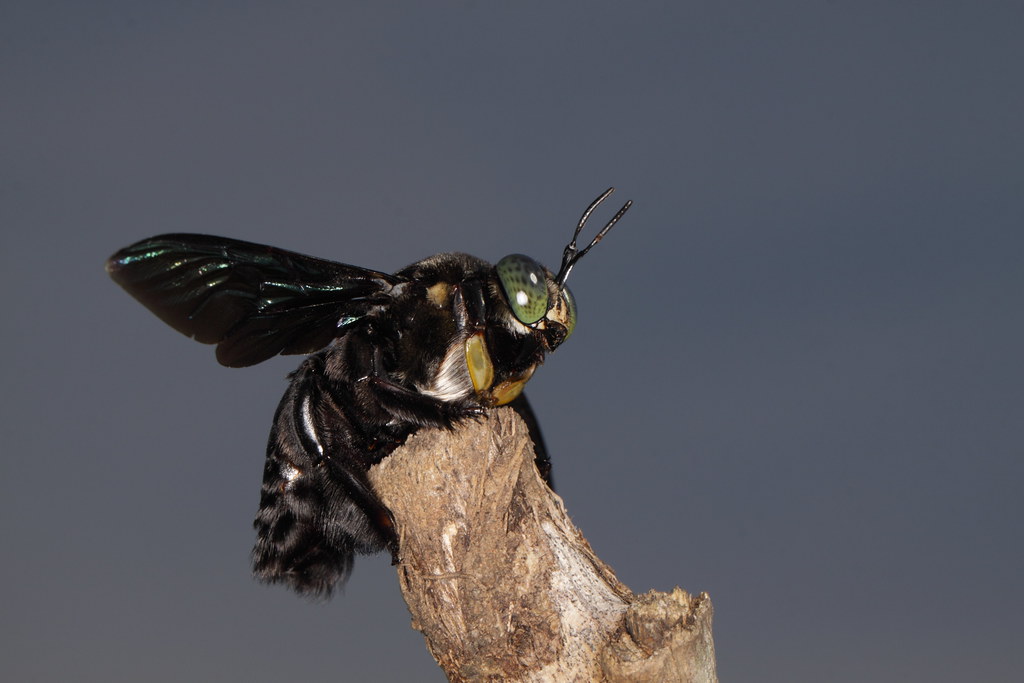
Carpenter bees have a robust, shiny, black abdomen and a yellow thorax. They can be easily confused with bumblebees, but unlike bumblebees, their abdomen is smooth and hairless. Male carpenter bees are black and orange, while females are entirely black. Their size can vary from ¾ inch to 1 inch.
The females are known for their ability to bore into wood. They don’t eat the wood but create tunnels through it to form a series of tiny chambers where they lay their eggs. Each chamber, or “gallery,” houses an individual egg and a ball of pollen and nectar for the developing larva to feed on.
After laying eggs, the female seals each chamber. The larvae develop over the summer, transforming from eggs to larvae, then pupae, and finally emerging as adult bees. These new adults usually stay in the nests through the winter and emerge the following spring to start the cycle again.
While unable to sting, male carpenter bees can be quite aggressive. They often hover around nest sites and may sting any threatening species. This behaviour is a form of territorial defence to protect the nests from intruders.
The lifecycle of a carpenter bee consists of four stages: egg, larva, pupa, and adult. Females lay their eggs in the tunnels they bore, and the larvae feed on pollen and nectar provided by the female. The larvae develop into pupae and eventually become adult bees.
Carpenter bees prefer softwoods such as pine, cedar, and redwood for nesting. They are often found in wooded areas, residential areas with wooden structures, and even untreated wooden furniture.
There exist about 500 species of carpenter bees worldwide, with about ten species found in the United States. The most common species in the US is the Eastern carpenter bee (Xylocopa virginica).
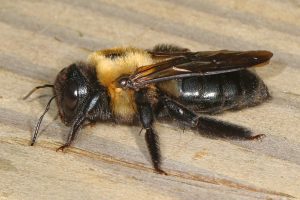
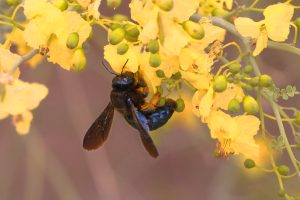
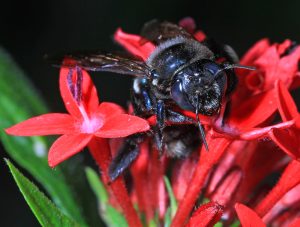
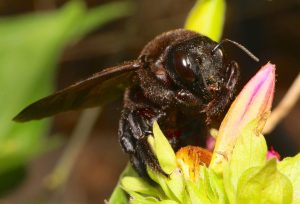

To effectively manage carpenter bee infestations, follow these steps:
While female carpenter bees can sting, they are usually non-aggressive and will only sting if provoked or handled. They have a stinger and venom, much like other bees, but they are not naturally inclined to sting humans. Male carpenter bees, on the other hand, can’t sting at all.
Yes, carpenter bees are significant pollinators. They play a crucial role in the pollination of many flowers and plants. While they may not be as prolific as honeybees in terms of pollination, their ability to transfer pollen from one flower to another contributes to the reproduction of various plant species. This makes them an important part of the ecosystem, aiding in the growth of fruits, vegetables, and ornamental plants.
Carpenter bees are not dangerous to humans as they are generally non-aggressive. However, they can pose a danger to wooden structures. Female carpenter bees bore into wood to create nests, which causes structural damage over time. Repeated nesting in the same area can weaken wooden structures, leading to the need for repairs. This behavior makes them a concern for homeowners with untreated or weathered wood on their property.
No, carpenter bees do not produce honey. Unlike honeybees, which live in colonies and produce honey to feed their members during winter, carpenter bees are solitary and do not have the same social structure or storage needs. Carpenter bees are known to collect nectar and pollen to feed their larvae, but they do not create honeycombs or store honey.
No, carpenter bees do not consume wood. They create nests and tunnels for their offspring. The sawdust-like material, or frass, seen around their nests is a result of their boring activities, not feeding. The tunnels they create can weaken wooden structures over time, especially if they return to the same site year after year.

Get your free pest control estimate today!